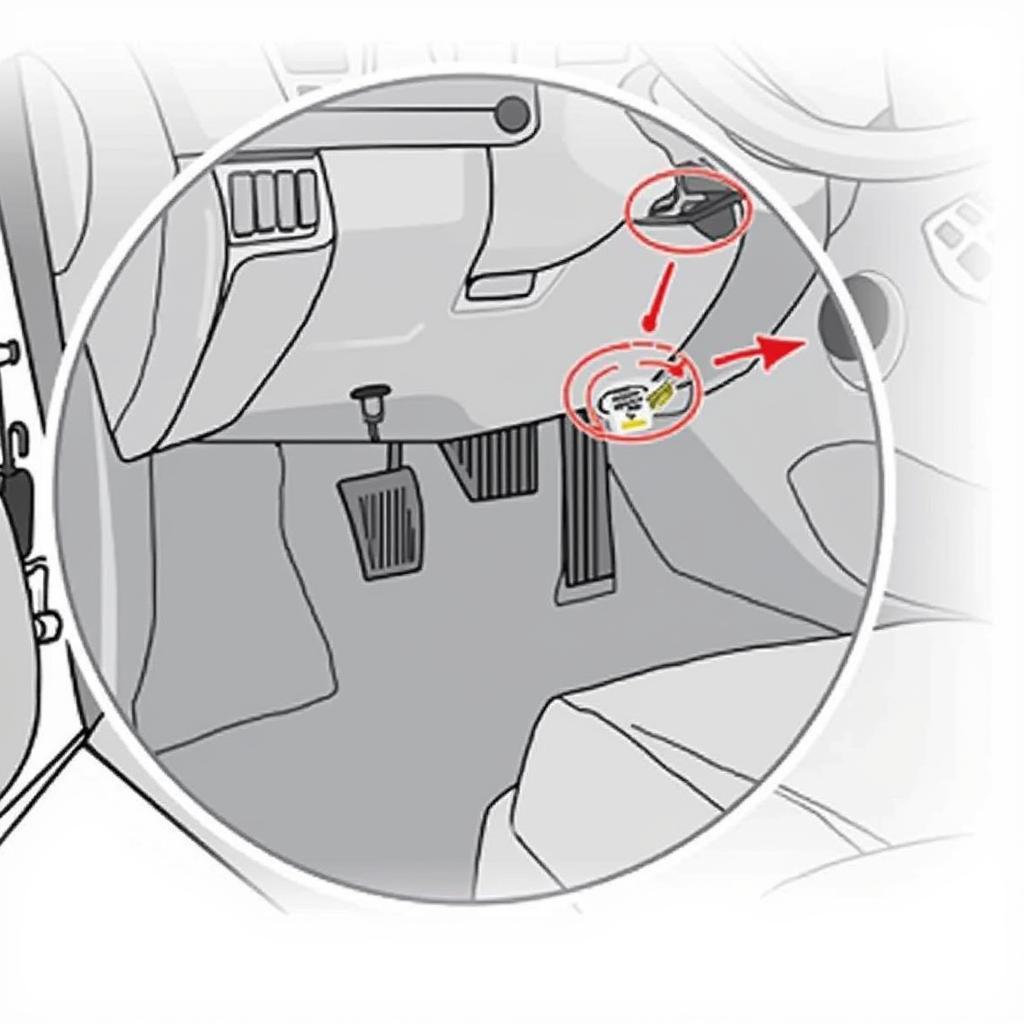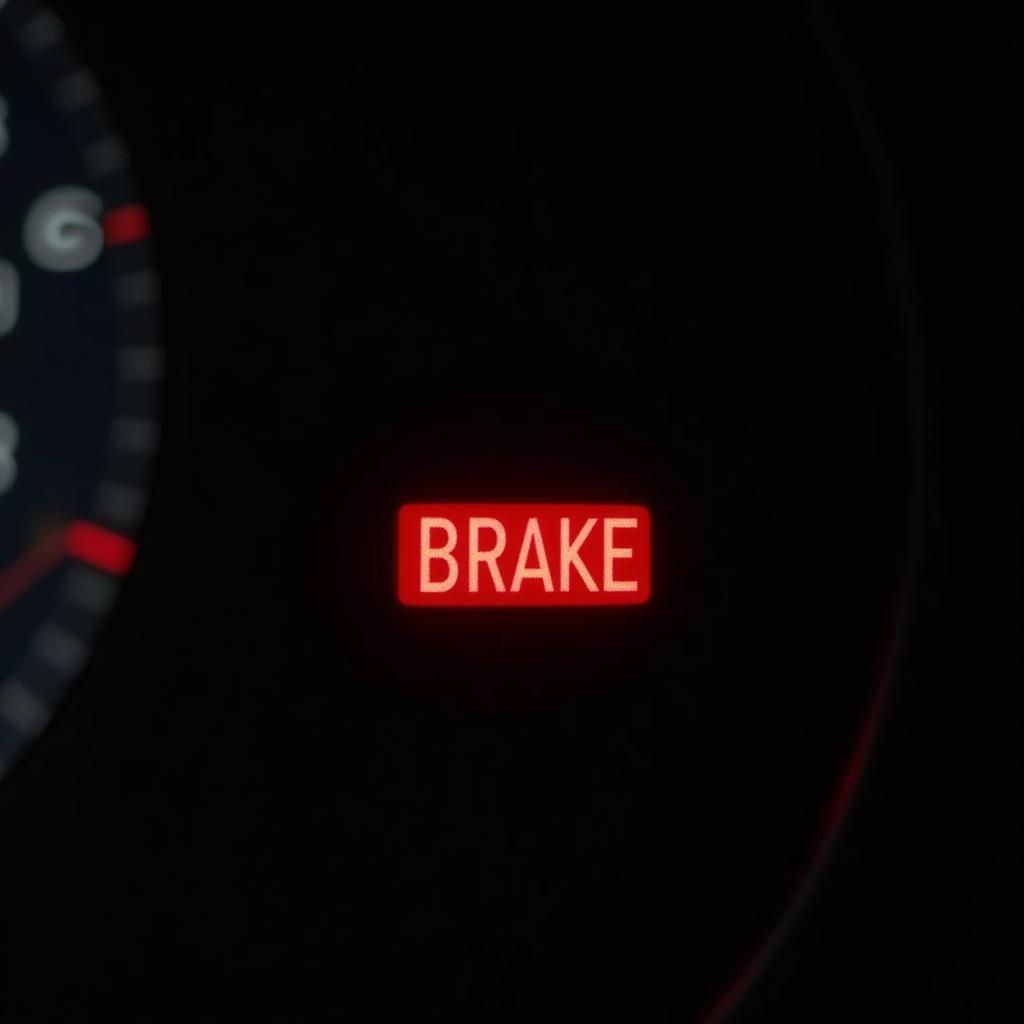The “brake warning” light on your Jaguar S-Type is a vital indicator that something is wrong with your braking system. It can be scary to see this light illuminate on your dashboard, but understanding the potential causes and how to address them can give you peace of mind.
This article will cover everything you need to know about the Jaguar S-Type brake warning light, including common reasons for it to appear, steps you can take to diagnose the problem, and when it’s essential to seek professional help.
Common Causes of the Brake Warning Light
There are several reasons why the brake warning light might illuminate on your Jaguar S-Type. The most common culprits include:
1. Low Brake Fluid
The brake warning light will often turn on if the brake fluid level is low. Brake fluid is essential for hydraulic braking systems, and when its level drops, it can compromise the effectiveness of your brakes.
“If the brake fluid level is low, the first thing you should do is top it off,” says John Smith, an experienced automotive technician with over 20 years of experience. “But it’s important to understand that a low fluid level might be a symptom of a more serious issue like a leak.”
2. Faulty Brake Pad Wear Sensors
Your Jaguar S-Type has brake pad wear sensors that trigger the brake warning light when your brake pads are nearing the end of their lifespan. These sensors are typically located behind the brake pads and connect to a wire running to the brake warning light system.
“When the sensor gets worn down, it can cause the warning light to stay on, even if your brake pads are still within acceptable limits,” explains Sarah Jones, a seasoned automotive mechanic. “It’s best to replace the sensor as soon as possible to prevent it from malfunctioning and causing further issues.”
3. Faulty ABS (Anti-lock Braking System) Sensor
The ABS system is a critical component of your Jaguar S-Type’s braking system. If one or more of the ABS sensors malfunction, the brake warning light will illuminate.
“A faulty ABS sensor can cause the ABS system to operate improperly, leading to reduced braking effectiveness,” notes Michael Davis, a certified automotive engineer. “It’s crucial to have a professional diagnose the ABS sensor problem and repair it as soon as possible to ensure safe braking.”
4. Faulty Brake Light Switch
The brake light switch is responsible for activating the brake lights when you press the brake pedal. If the switch malfunctions, it can trigger the brake warning light.
“A broken brake light switch can be a safety hazard, as it may prevent your brake lights from illuminating when you brake,” warns John Smith. “This can lead to accidents, especially at night.”
5. Electrical Issues
Occasionally, an electrical fault in the brake warning light system can cause it to illuminate even if there is no actual problem with the brakes.
“It’s always a good idea to have your car’s electrical system checked by a qualified technician if the brake warning light is on without a clear explanation,” advises Sarah Jones. “They can use a diagnostic scanner to identify any potential electrical issues.”
Diagnosing the Brake Warning Light
If your Jaguar S-Type’s brake warning light turns on, take the following steps to try and identify the issue:
- Check the Brake Fluid Level: Open the hood and locate the brake fluid reservoir. The reservoir is typically a small, clear container with markings showing the minimum and maximum fluid levels. If the fluid level is below the minimum mark, add brake fluid of the appropriate type.
- Inspect the Brake Pads: If the brake fluid level is normal, check the brake pads for wear. Look at the brake pads through the wheel spokes or by removing the wheels. Worn-out brake pads will be very thin.
- Check the Brake Light Switch: The brake light switch is typically located on the brake pedal assembly. You can test the switch by using a multimeter to measure continuity between the terminals when the brake pedal is pressed.
- Look for Leaks: Inspect the brake lines and hoses for any signs of leaks. Look for wet spots or drips under the car, especially around the wheels and the brake master cylinder.
When to Seek Professional Help
If you are unable to identify the cause of the brake warning light or are unsure how to fix it, it’s best to take your Jaguar S-Type to a qualified mechanic. They can use a diagnostic scanner to read any fault codes stored in the car’s computer, providing valuable information about the problem. They can also perform a thorough inspection of the braking system to determine the underlying cause.
“It’s never a good idea to ignore a brake warning light,” warns Michael Davis. “It’s an indicator that something needs attention. If you are unsure of what to do, seek professional help to ensure your car is safe to drive.”
FAQ (Frequently Asked Questions)
Q: What happens if I drive with the brake warning light on?
A: It’s not recommended to drive with the brake warning light on for an extended period. The issue that triggered the light could be a safety concern.
Q: How often should I have my brake pads inspected?
A: It’s a good idea to have your brake pads inspected every 6 months or 5,000 miles.
Q: Can I safely top off my brake fluid myself?
A: Yes, you can safely top off your brake fluid if you know the proper procedure and use the correct type of brake fluid. However, it’s important to note that adding brake fluid will not solve the underlying problem causing the low fluid level.
Q: How much does it cost to fix a brake warning light?
A: The cost to fix a brake warning light can vary depending on the cause and severity of the problem. It could range from a simple brake fluid top-off to a full brake system replacement.
Q: Can I reset the brake warning light myself?
A: In some cases, you might be able to reset the brake warning light yourself by using a diagnostic scanner or by disconnecting the battery for a few minutes. However, this will not address the underlying problem.
Q: What should I do if the brake pedal feels soft or spongy?
A: A soft or spongy brake pedal can indicate a problem with the brake system. It’s important to stop driving immediately and have the braking system checked by a professional.
Q: What if the brake warning light turns on and off?
A: A brake warning light that turns on and off can indicate a loose connection or an intermittent electrical problem. It’s still a good idea to have your car checked by a mechanic to identify the issue.
Remember, your Jaguar S-Type’s brake warning light is a vital safety feature. Don’t ignore it! Understanding the potential causes and taking appropriate action can help keep you and your passengers safe on the road.


